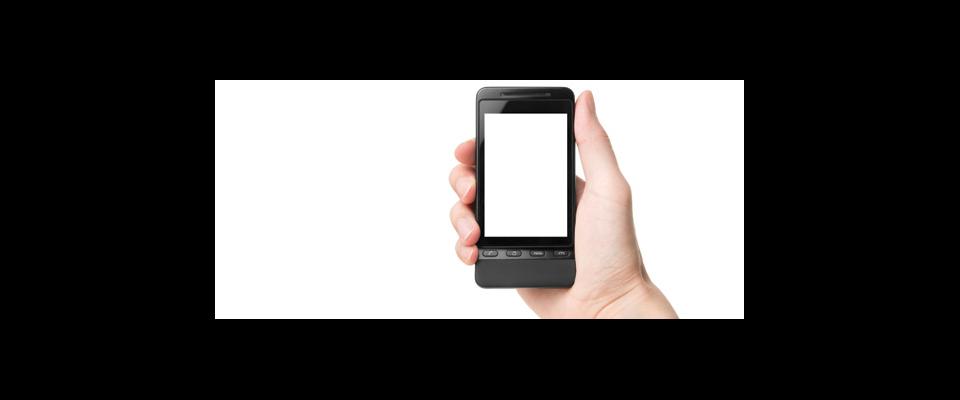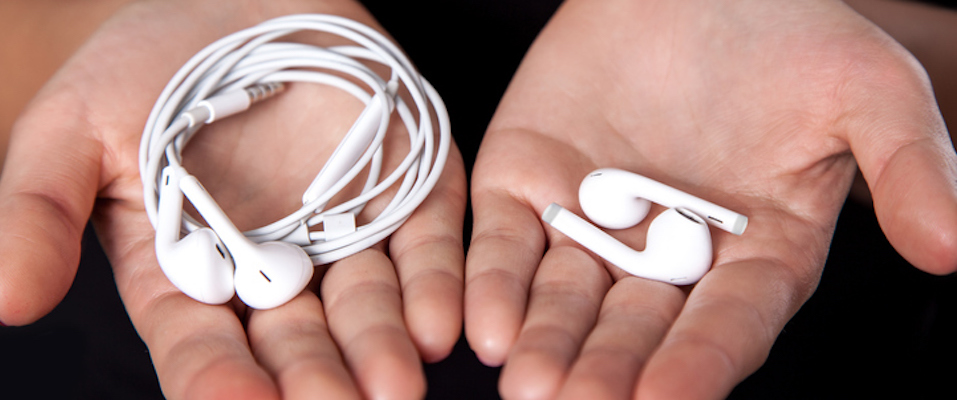Update: The Berkeley City Council on May 12 unanimously voted to make Berkeley the nation’s first city with a “Right to Know” law about health risks associated with radio frequency radiation from cell phones. Under the ordinance, which would take effect in July, retailers must give consumers printed warnings including: “If you carry or use your phone in a pants or shirt pocket or tucked into a bra when the phone is ON and connected to a wireless network, you may exceed the federal guidelines for exposure to RF radiation.” CTIA—The Wireless Association, representing the cell phone industry, has vowed to go to court to block the ordinance, calling the warnings “misleading and alarmist.”
Just as the world supply of mobile phones is reaching one unit for every human being on Earth, here comes Berkeley, with a warning: These things could be hazardous to your health.
Under a proposed city ordinance, every new mobile phone sold in town would carry a sticker advising that the World Health Organization has deemed transmissions from cell phones a “possible” cause of brain cancer. Berkeley could become the first city in the United States to require such a warning, but the ordinance will likely face a formidable legal challenge.
When the WHO’s International Agency for Research on Cancer (IARC) listed radiofrequency electromagnetic fields as “possibly carcinogenic to humans” three years ago, it staked out some middle ground in a complex and bitter controversy spanning three decades. On one side are some politically active epidemiologists, doctors and researchers, who are convinced that cell phone signals can cause cancer and other health problems. On the opposite side are the wireless industry and a sizeable portion of the scientific community, led by physicists, saying this is nonsense.
Evidence of risk is conflicting and thin, according to the IARC’s 30-member panel of experts, but they determined in May 2011 that the link to malignant brain tumors could not be ruled out. In fact, their decision was almost unanimous. As panel members explain, the listing as a Group 2B “possible” carcinogen recognizes that “there is some, albeit uncertain evidence of risk.” In the hierarchy of harm, it is placed one step short of “probable,” and two steps short of Group 1, the domain of “known human carcinogens” like tobacco, asbestos, and X-rays.
Stakes in this argument are extraordinarily high. Cell phones are radio transmitters that are not only ubiquitous, they are close at hand: We press them against our ears. We store them in our pants pockets. Women slip them into their bras. Teens sleep with them under their pillows. With the adult market nearly saturated, the big growth opportunity for mobile devices is children.
A key adviser to ordinance backers is Joel Moskowitz, a center director in the UC Berkeley School of Public Health and a veteran of the tobacco wars, who was at first skeptical that cell phones could be dangerous, but now believes it is highly likely. “None of us say we need to ban this technology,’’ he explains. “I have a cell phone on my desk. But we are arguing for safer use.”
The move inevitably will draw the city into a tangle with CTIA–The Wireless Association, the Washington DC lobby and trade group for the industry, which in the United States is valued at $195 billion. When San Francisco tried a similar law in 2010, the CTIA sued in federal court and won. The court blocked the labeling requirement on First Amendment grounds, ruling that the ordinance would compel retailers to display information that was controversial, given that the health issues were being debated among scientists, while the equipment met Federal Communications Commission guidelines.
“In our society, the precautionary principle does not resonate well. We want to see a body count first.”
The ruling against San Francisco drew the attention of Harvard Law professor Lawrence Lessig. A constitutional law scholar and an expert on the influence of money on politics, he has offered to craft the Berkeley ordinance, and defend it in court, pro bono. “This ordinance is a legitimate use of Berkeley’s regulatory authority,” says Lessig. “I have long been troubled by the growing practice of industry using the First Amendment to stifle legitimate sovereign power. For local or small state governments, the threat of paying legal fees is often enough to get the government to cower.”
The CTIA’s position on cell phones and health is clear in written testimony to the Federal Communications Commission, which is currently reassessing its 18-year old-radio frequency exposure limits: “The (FCC), federal health and safety agencies, and international standards-setting bodies agree that cell phone use is not associated with adverse health effects.” It is noteworthy that the Chairman of the FCC, Tom Wheeler—appointed by President Obama in November—is a former President and Chief Executive of CTIA. In 2003, he was inducted into the Wireless Hall of Fame.
The CTIA statement builds a case that the “scientific consensus” is firmly in their camp. In fact, the two-word term appears 28 times in their filing. They quote numerous federal agencies asserting a lack of evidence that cell phone radiation can cause harm. Among them is the FCC itself, the FDA, and most notably, the National Cancer Institute, which states on its web site that “there is no evidence from studies of cells, animals, or humans that radiofrequency energy can cause cancer.”
Moskowitz dismisses the endorsements. “Industry and government agencies seem to be in denial, and have been in that frame of mind for decades,’’ he says.
Harder to dismiss are two simple charts. One plots the growth of cell phone subscriptions in the U.S. from 1985 to 2011. The second plots the incidence of brain and nervous system cancer since 1975. Cell phone use skyrockets, while the cancer rate remains flat. If cell phones caused brain tumors, the industry and its supporters argue, the line on the incidence chart should be rising as well.
However, it may be simply too early to tell, because brain cancers have a long latency period; and those concerned contend that to wait for conclusive proof from cancer cases is to wait too long.

UC San Francisco professor of medicine Stanton Glantz, one of the nation’s leading experts on tobacco control and the health hazards of second-hand smoke, says that the science on the potential harm from cell phone radiation is far from settled. “I think cell phones are about where cigarettes were in 1955,’’ he says. “There is more than enough evidence to be worried.”
The reason most cell phone health studies are done in Europe, according to Moskowitz, is because there is little funding for it in the United States. Europeans, he adds, put the onus on industry to prove a technology is safe, whereas “in our society, the precautionary principle does not resonate well. We want to see a body count first.”
Lacking such definitive proof, laymen and scientists alike are left with imperfect tools, and much of the debate involves the teasing out of trends from a large body of complex and contradictory findings.
More than 900 studies were evaluated by the IARC panel. In the end, much of their analysis came down to two European studies that had been, and continue to be, the focus of the debate. Both are large “case-control” studies where brain tumor patients are interviewed about their usage of cell phones, and their responses are compared to those of a similar people, drawn from the general public, whose health status as well as phone habits are not known at the start. Case-control studies are difficult to design, are vulnerable to bias, and can be subject to widely different interpretations.
Of the two, Moskowitz favors the ongoing case studies of Swedish oncologist Lennart Hardell, who receives no industry funding, and notably includes cordless landline phones in his analyses. His work shows a clear relationship between wireless phone use and increased risk of malignant gliomas as well as of acoustic neuromas, a benign but potentially disabling brain tumor near the ear. In January, the Hardell group published data showing that the link to brain cancer has only strengthened since his studies were evaluated by IARC. The latest findings reaffirmed a 70 percent higher risk of malignant brain tumors among all who had used cordless and/or cell phones for a year or more, and further showed a doubling of risk among the subgroup reporting such use for 20 to 25 years, and a tripling of risk for those reporting more than 25 years.
Industry favors the results of the IARC’s own INTERPHONE project, a larger survey that combined studies from 13 European nations and was funded by government agencies and wireless industry groups. The results published in 2010 found no overall link between cell phone use and brain tumors—in fact it showed a slight decrease in tumor risk. However, the same study did flag, among a subgroup of those with the heaviest cell phone use, a 40 percent increase in risk, which rose to 80 percent with a statistical adjustment to correct for selection bias caused by the method used to recruit the control group. Although that subgroup analysis was deemed inconclusive by the authors, it weighed heavily in the deliberations of the WHO panel, which ultimately issued its cautionary findings.
“People with fringe ideas rarely recant, whether their belief involves cold fusion, alien abductions or ESP.”
The epidemiological hints that cell phones might cause cancer would gain credence if scientists could demonstrate a plausible mechanism by which radiofrequency radiation can damage genes. Unlike ionizing radiation from X-rays, cell phone radiation cannot directly break DNA. “Microwave radiation from cell phones cannot cause cancer by any mechanism, known or unknown,” writes physicist Bernard Leikind. “The brain receives only a tiny amount of energy from a cell phone compared to that generated by normal activity such as working out…Cell phones cannot damage living tissue or cause cancer.” Researchers nonetheless are exploring possible “non-thermal” effects that could indirectly cause damage, including production of chemically reactive free radicals, thought to play a role in aging.
According to the American Cancer Society, limited animal studies of cell phones and cancer risk have shown no evidence of tumor promotion. More definitive answers await results from the National Toxicology Program, a research arm of the U.S. Department of Health and Human Services, which is conducting large-scale tests of whether cell phone radiation can cause health problems in rats and mice exposed over a two year period, and tracked from birth to old age.
The health concerns are not limited to cancer, and include reproductive toxicity. This year, a British survey of ten different studies of the effect of cell phones exposure on human sperm found an overall 9 percent reduction in viability and an 8 percent reduction in motility, or the ability to swim forward. A recent study of rabbits exposed to simulated cell phone radiation showed damage to the epididymis, a tube traveled by sperm from the testes.

Those who are certain that cell phone radiation has no biological effects might want to consider an experiment conducted in 2012 at Yale Medical School. Dr. Hugh Taylor placed pregnant mice in cages, half with commercial cell phones transmitting (but silenced), and half with identical phones turned off. While the number of baby mice was the same, and they grew up to be perfectly fertile, the behaviors of the cell-phone-exposed progeny were strikingly different. Using a battery of well-established tests, Taylor found that the mice exposed in utero were hyperactive, had impaired memory, and less anxiety — traits that in humans are associated with Attention Deficit Hyperactivity Disorder. The results were dose dependent: The longer the exposure, the more striking the traits. Taylor, who is chief of obstetrics and gynecology at Yale-New Haven Hospital, set up the behavior experiment after a Danish study in 2008 found an association between prenatal and postnatal cell phone use and behavior problems in children.
In Taylor’s study, tests of brain tissue from young mice in the exposed group showed evidence of impaired transmission of the chemical glutamate among nerve cells in the prefrontal cortex, a region controlling cognition and emotion—suggesting changes in neuronal circuitry may have occurred.
He cautions that conclusions can’t be drawn from a single study, and humans are not mice; yet still he considers the findings provocative. “My bias,” says Taylor, “is that pregnancy, when development is occurring, is one of the most vulnerable times in human existence. If you make a mistake then, it can be permanently patterned.”
If the scientific consensus, as underscored by the CTIA, is that cell phones cannot cause health problems, are those who continue to raise a red flag about this no better than climate science deniers, who see global warming as a hoax? In so many words, science journalists have been warned to steer clear of this topic. Last month, the press watchdog Knight Science Journalism Tracker at MIT called out New York Times science writer Kenneth Chang for recently revisiting SUNY-Albany environmental scientist David O. Carpenter, “who hasn’t changed his mind” about health effects of electromagnetic fields in 25 years. “People with fringe ideas rarely recant, whether their belief involves cold fusion, alien abductions or ESP,” wrote KSJ Tracker’s Faye Flam.
Despite the weakness of epidemiological data, the lack of known mechanisms by which radiofrequency radiation could cause harm, and strident criticism from very smart people, the cell phone health issue just refuses to go away. Nor have reports of potential problems, such as a French study, published in May, showing a near tripling of malignant brain cancer risk among heavy users of cell phones. Berkeley’s proposed ordinance, sponsored by Councilmembers Maxwell Anderson and Kriss Worthington, will keep the topic in the headlines, perhaps plant a seed of doubt, and remind folks again that there are ways to keep mobile phone use at a distance. Cell-phone makers in their fine print do advise keeping these devices about a half-inch away from your body, although there is no mention of it in an industry-written parents’ guide to cell phone safety.
And meanwhile, let’s face it: We just love these little appliances. They are changing the way we live. If they are changing the way we die, we’ll find out, eventually.





















